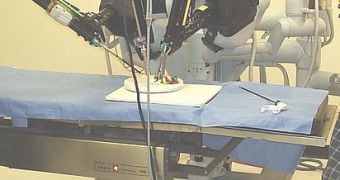The latest innovations in the field of surgery and emergency health care are really astonishing, both doctors and patients admit it. But perhaps the most useful and modern system of attending to the wounded is the one developed to respond to the needs of injured soldiers on the battlefields. Researchers have created a system that is entirely robotic, from the arms that maneuver the surgical instruments to the ones that supply the main machine with the materials it needs to successfully complete a surgery.
And the main thing about the new device is that it can be operated remotely, as in from a different country or from halfway around the world. This could be of tremendous use for soldiers in the world's hot spots, who often lose their lives because a specialized surgeon is not available in their unit to treat their wounds as fast as possible. However, with the new system, the need for a doctor is eliminated, as the best specialists in various countries can be made available to nurse their injuries.
In other words, a physician specialized in brain operations could potentially perform surgery on military personnel stationed in Iraq or Afghanistan from the comfort of his or her home in the UK or the US, or any other country for that matter. This level of health care will, indeed, ensure that, in the future, the most appropriate degree of medical attention will be given to those serving in the army as soon as possible.
“The system will focus on damage control surgery, the minimum necessary to stabilize someone. It could provide airway control, relieve immediate life-threatening injuries such as a collapsed lung, or stop bleeding temporarily,” SRI International expert Pablo Garcia, who is the lead developer of the new system, explains. According to him, the bed itself will incorporate state-of-the-art technologies and will be able to monitor a patient's life signs, as well as administer oxygen and other fluids.
The Pentagon's Defense Advanced Research Projects Agency (DARPA) has already invested more than $12 million in the new Trauma Pod system, which it hopes to make available on the battlefields of the world in about a decade. In the future, they look forward to creating even more advanced versions, ones that could perform complex surgeries while being remotely-controlled.

 14 DAY TRIAL //
14 DAY TRIAL //